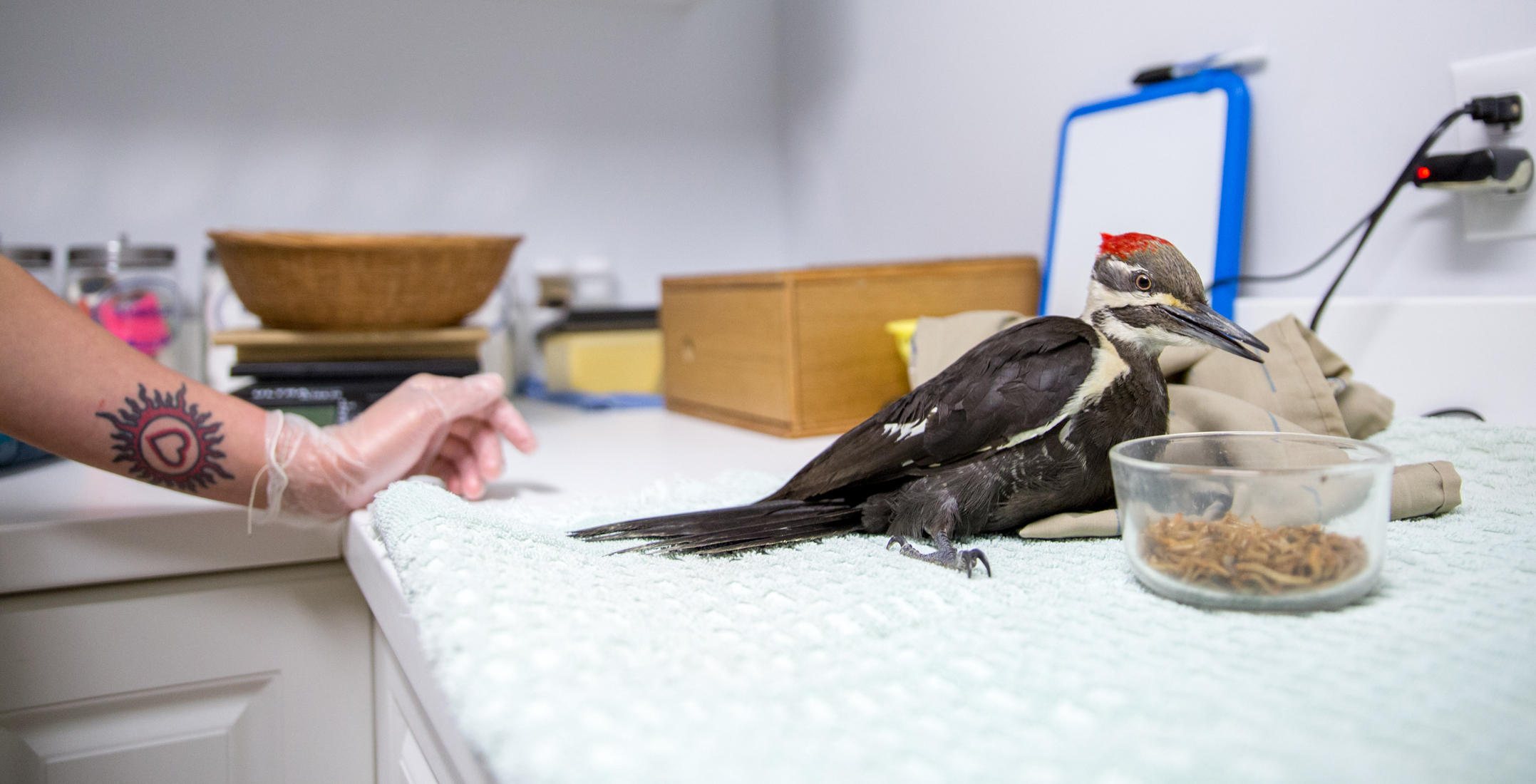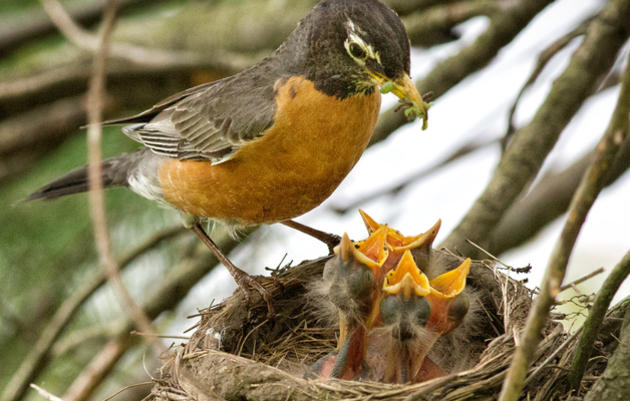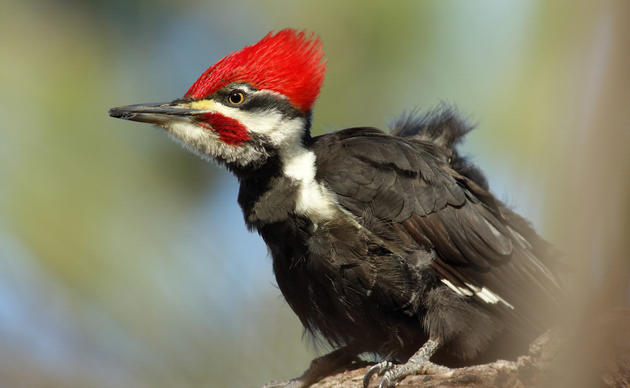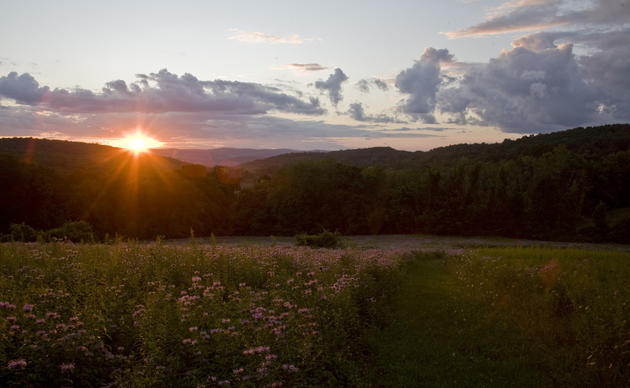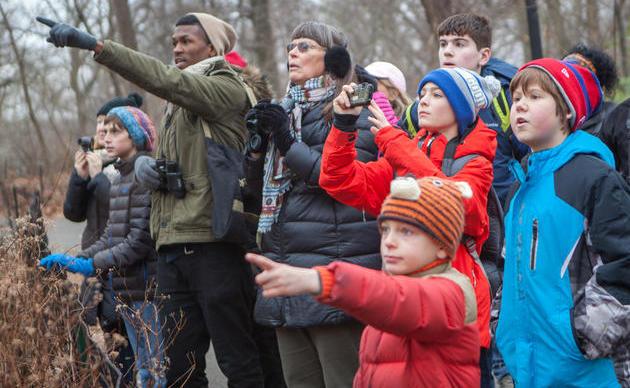Few things are more heartbreaking than encountering an injured, sick, or orphaned bird or other wild animal. It is in our human nature to want to help, but how do we make sure we do more good than harm? Follow these important wildlife guidelines.

KEEP WILDLIFE WILD and UNDERSTAND THE LAW
Only licensed Wildlife Rehabilitators should handle and treat wild animals. These professionals have specialized training and experience that is required to properly care for wildlife in a way that maintains and facilitates the natural behaviors that the animals need to survive in the wild. Possession of wildlife without appropriate permits is illegal. If you find/have rescued an injured animal, contact a licensed Wildlife Rehabilitator in Connecticut ASAP to get the help it needs.

KNOW YOUR RESOURCES
It is always good to be aware of your resources in a wildlife emergency.
The Wildlife Rehabilitation Clinic at Sharon Audubon Center is a Connecticut state and federally licensed wildlife rehabilitation facility for birds, small mammals, and reptiles. Each year, Sharon Audubon Center admits hundreds of sick, injured, and orphaned wildlife patients into the clinic, providing care and treatment with the ultimate goal of returning them to the wild as soon as possible. The wildlife rehabilitation staff and volunteers are on duty at the center to answer wildlife questions and interface with the public. Please call 860-364-0520 for assistance. If the team is busy with a patient and unable to answer the phone, please leave a message, and they’ll get back to you as soon as possible.
To find other licensed Wildlife Rehabilitators near you, look to the following state agencies and resources:
- Connecticut State List of Licensed Wildlife Rehabilitators (CT DEEP)
- New York State List of Licensed Wildlife Rehabilitators (NYS DEC)
- Animal Help Now (An animal emergency professional locator website and app)
No matter where you are, public lists of licensed Wildlife Rehabilitators in each state are available online. Just do an internet search for “list of licensed wildlife rehabilitators” for the state you are in.

WHAT TO DO IF YOU ENCOUNTER DISTRESSED WILDLIFE
Always contact a licensed Wildlife Rehabilitator ASAP to assist you with the rescue process. Much of the care protocol is dependent on a wide variety of factors, such as age, species, condition, location, etc.
Do Not Treat Wildlife Like a Pet: Wildlife needs to be scared of humans and domestic animals in order to survive. Humans are predators to wildlife! Our voices and our touch are not soothing to wild animals like they are to our pets. Often, the animal’s defense mechanisms (lying down, holding still) are mistaken for the animal being friendly or calm. Being around humans is stressful and scary for wildlife! Throughout the rescue process, remember:
- Be as quiet as possible! Do not talk to the animal
- Do not pet or hold the animal
- Keep animal away from people and pets
- Do not hand wildlife to children
- DO NOT give food or water

Step 1: Make Sure the Animal Actually Needs Help
It can often be difficult to determine if a wildlife situation is normal or if the animal is in distress. The first step is to determine if the animal actually needs to be rescued.
Signs that a wild animal needs help:
- Animal was picked up by a cat or a dog
- Evidence of bleeding
- Obvious broken/injured limb (dragging leg, hanging wing)
- Animal is a featherless/furless baby
- On the ground in the same spot for more than 24 hours
- On the ground with eyes closed, squinted, crusty, weepy, swollen, bleeding
- Tries to get away from you but can’t (tries to fly, walk, stand, etc. but unable to)
- Flies buzzing around the animal (means the animal has been there for a long time)
View additional links / wildlife pages at the bottom of this page for more animal-specific information on signs of normal behavior, injuries, and common situations that you may encounter. [More pages are being created and coming soon]
| Take Photos for the Rehabilitator |
|---|
If possible, take two photos to share with the licensed wildlife rehabilitator so that they can help you determine if an animal needs to be rescued and to best direct you on how to proceed.
- Photo 1: “Full-body shot” that is a close-up image of the head and the entire body of the animal
- Photo 2: A zoomed-out photo to show the position/location of the animal in its environment

Step 2: Safely Contain the Animal
If an animal does need help, it must first be contained to efficiently, safely protect both yourself and the animal from further harm. Wildlife rescues can be potentially hazardous if done improperly!
- ALWAYS CONTACT A LICENSED WILDLIFE REHABILITATOR BEFORE ATTEMPTING TO CONTAIN ANY WILD ANIMAL.
- ALWAYS wear protective gloves when containing distressed wildlife, even if you do not come in direct contact with the animal.
- NEVER ATTEMPT TO CONTAIN ANY RABIES VECTOR SPECIES (Raccoon, Skunk, Fox, Bat) without first contacting a licensed wildlife rehabilitator and receiving specific directions.
- DO NOT attempt a rescue if the animal is in a hazardous location (highway, busy road, up in a tree, on a frozen lake, etc.) or in any situation that may put you or someone else at risk. Contact a licensed wildlife rehabilitator immediately.
The container you use for the animal should:
- Effectively contain the animal
- Be an appropriate size (the animal should easily fit into the container, but not have excessive space to move)
- Prevent escape
- Not cause further injury
- Allow air flow (make air holes if needed)
- Have a visual barrier (the animal should not see out, you should not see in) - this can be achieved with an additional towel or sheet covering any see-through parts of the container
Examples of Safe Containers for Small Animals (songbirds, baby animals, small reptiles): shoebox, small cardboard box with closing flaps, paper bags, small plastic household or food storage container with lid and air holes
Examples of Safe Containers for Larger Animals (adult mammals, waterfowl, raptors): large cardboard box with closing flaps, large plastic storage bin with lid and air holes, pet carrier
| Additional TLC for Babies |
|---|
Be sure to very gently scoop up/handle the baby animal when placing them in their container. Baby animals also need a soft material lining in their container. *DO NOT use terrycloth towels or fabric with holes or strings for container lining! Babies can get stuck and tangled, causing serious harm.*
For baby birds, craft a makeshift nest out of a small Tupperware container or a similar round dish, completely lined with layers of toilet paper that prevent the baby from touching the container itself. This inner nest made of toilet paper must be “cupped shape” to keep the baby in a normal position, with legs tucked beneath it. The bird should be placed in the nest, right-side up. If legs are splaying out to the side or behind the bird, the nest must be made into more of a cupped shape.
For all other baby animals, line the container with a soft t-shirt or pieces of fleece for the baby to hide in.
Because babies are often too young to make their own body heat, it is also important to provide supplemental heat for the animal to survive. Supplemental heating options include:
- Heating pad on “LOW” setting and placed underneath the container (if it has an auto-shut off, make sure it stays turned on)
- Heated rice sock (Fill a sock with rice and microwave for 1 minute. If too hot when taken out, wait for it to cool down before putting in with the baby. Wrap sock in small hand towels and place under the fabric inside the box. *DO NOT LET THE BABY TOUCH THE RICE SOCK, THIS CAN CAUSE BURNS.)
- Small ziplock sandwich baggies filled with hot water (*Double bag the hot water* and place the bag beneath the fabric inside the box with the baby. *DO NOT LET BABY TOUCH THE BAGS, this can cause burns.)
| Tips for Containing Adults |
|---|
Many animals may be easily contained without touching them directly. Use a cardboard box or a plastic storage container with a separate lid:
- Slowly approach the animals and placing a cardboard box or plastic storage container over the animal.
- Slowly slide the lid or another piece of cardboard beneath the box to contain the animal inside. *Do not lift the container any more than you need to in order to slide lid underneath.*
- Keeping the animal inside, slowly turn the box (with the lid) to an upright position and secure the lid. The animal will adjust itself inside.
Small birds may be easily contained by scooping them up with both hands (WEARING GLOVES) and placing them in a box, or by draping a pillowcase or small towel over the bird and gently scooping around their body. BE CAREFUL not to put pressure on the animal and cause further injury.
Always wear protective gloves when containing distressed wildlife, even if you do not make direct contact with the animal. Leather gloves prevent hazards like bites, punctures, and scratches.

Step 3: Arrange Transport to Licensed Wildlife Rehabilitator
*If you have already received directions by a licensed Wildlife Rehabilitator, please follow their guidance*
Meanwhile, place the animal in a DARK, QUIET, WARM area away from people and pets (spare bedroom, basement, garage, etc.).
The animal MUST be transported to a licensed Wildlife Rehabilitator ASAP for immediate treatment. The sooner the animal can get help, the more of a chance it has for survival. The longer the animal waits for help, the worse its condition will get.
| Other Things to Remember |
|---|
DO NOT FEED OR WATER the animal at ANY time unless specifically directed to do so by a licensed Wildlife Rehabilitator
- Many wildlife patients come into our rehabilitation clinic and do not survive because they were improperly fed or watered or fed inappropriate things.
- There is much more happening with the animal than meets the eye! Giving food or water can do more harm than good! All wildlife must be properly stabilized by a licensed wildlife rehabilitator before providing food or water (unless otherwise directed by the licensed wildlife rehabilitator).
Minimize STRESS for the animal as much as possible
- Stress is a medical condition and is the #1 killer of captured wildlife. Wild animals do not know you are trying to help them. They see you as a predator and they are scared!
- Quiet: Do not talk to the animal. Our voices are not soothing to wildlife like they are with our pets. Talking will scare them more and cause more stress. Keep any talking to a whisper and when contained, keep the animal in a quiet place away from people and pets.
- Do not play with the animal, take selfies, pass it around, let other’s hold it, etc.
- Dark:When the animal is contained, keep it in a dark place, or place a towel or sheet over the container it is in to keep it dark, and so you can’t see in and the animal can’t out. Darkness and being hidden will decrease stress.
- DO NOT allow children or pets to touch the animal.
- Animals may carry disease, bacteria, or parasites that can transmit to others. Please keep your children and pets safe.
- Improper handling can hurt the animal
- Extra, unnecessary handling of the animal will increase stress and decrease its chance of survival
- Both dogs and people are seen as predators. While your dog may not hurt the animal, being exposed to predators will cause extreme stress for the animal, which can cause death.

More Animal-Specific Information
How you can help, right now
Learn & Explore
Where birds thrive, people prosper. Help us transform local communities into places where birds flourish. Learn what you can do to nurture wildlife, nature, and conservation in Connecticut.
Support Our Work
Through land stewardship, science, education, and advocacy, we work to preserve habitat and protect bird species that are of state, national, and global concern. Your gift makes a difference.
Join Our Family
When you become a member of Sharon Audubon Center, you are protecting critical woodlands and a natural heritage for generations to come. Help us do great things.

